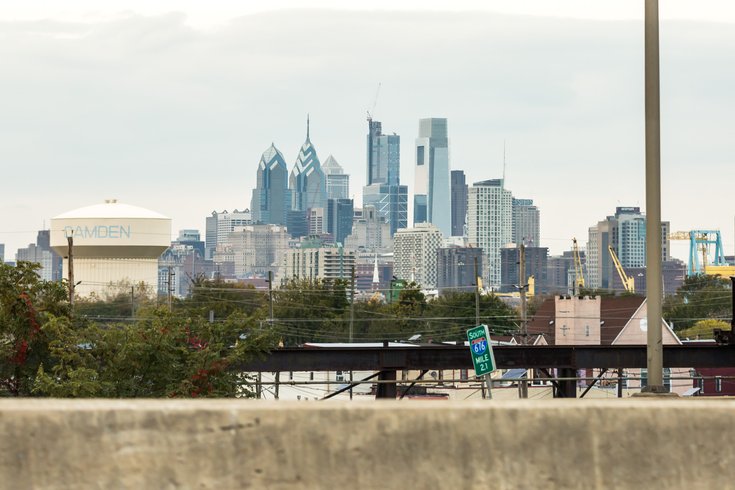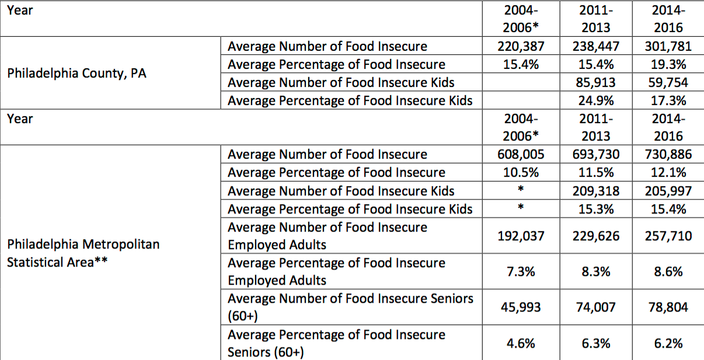
December 04, 2017
 Thom Carroll/PhillyVoice
Thom Carroll/PhillyVoice
The Philadelphia skyline from Interstate 676 in Camden, NJ.
More people are experiencing food insecurity in Philadelphia than the national average, marking a divergence from the broader picture of progress in the US since the 2008 economic recession, according to a new report from Hunger Free America.
The advocacy group and research organization analyzed federal data in Philadelphia and other cities around the country, finding that approximately one in five Philadelphians lives in a household that struggles to afford sufficient food.
From 2014-2016, the most recent period under review, researchers found that 301,781 Philadelphia residents were food insecure, up from 238,447 between 2011-2013.
During the same six-year period from 2011-2016, the percentage of Americans living in hunger, as a whole, fell from 14.6 percent to 13 percent.
The first period of the study, from 2004-2006, shows that the country as a whole has suffered at the table as a result of the recession. While food insecurity rose by 1.7 percent nationally in the last decade, Philadelphia's hunger problem increased by 3.9 percent during the same period.
Food insecurity statistics in Philadelphia.
Berg pointed out the problem isn't isolated to Philadelphia. The entire mid-Atlantic region has seen a spike in food insecurity, rising to about one in eight in surrounding metropolitan areas in Pennsylvania, New Jersey, Delaware and Maryland.
"Some may take false comfort thinking this is only a problem for the city, but this new data shows it’s a crisis impacting every suburban county in the region too," Berg said. "This data provides just the latest evidence of why it would be both hard-hearted and economically self-defeating for Congress to now further cut federal food benefits.”
The release of the report, hosted at an event at a Brown's Super Store location in North Philadelphia, comes as the Trump administration continues to threaten cuts to the Supplemental Nutrition Assistance Program. Legislators have so far maintained current levels of funding ahead of a Dec. 8 deadline for the 2018 budget.
“No one in America should go hungry and no one with a job should need to be on SNAP," said Brian Lang, Director of the Food Trust's National Campaign for Healthy Food Access. "This new data shows we need to do much more to fight poverty and hunger. Cutting SNAP, like this administration has proposed, at a time when so many families are struggling, would increase hunger, cripple our economy, worsen health disparities and exacerbate rising healthcare costs.”
 Source/Hunger Free America
Source/Hunger Free America